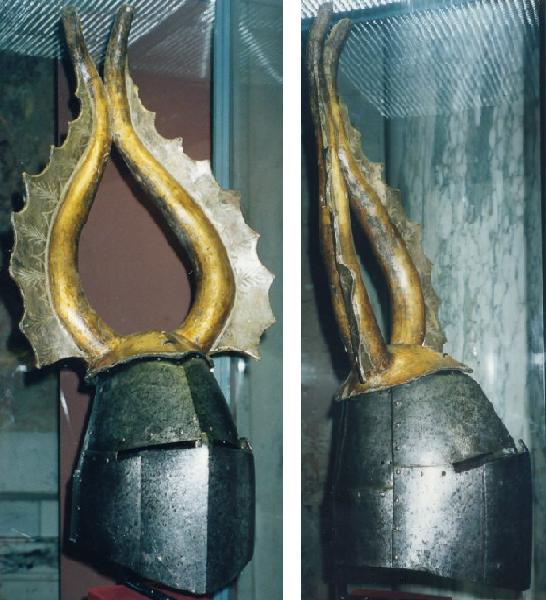Posts: 1,576 Location: Bergen, Norway
Thu 13 Jul, 2006 9:58 am
You can fight duels wearing a greathelm, but moivng in any kind of terrain would be very awkward.
Also, a group battle proveds you with lots of new and exiting angles to be struck from.
Further more, the combination of kettlehat and
shield already provides ample protection for the face, without the tradeoffs.
When fighting on foot, I'd definitely go with the kettlehat, or the cervilet.
There are of course exceptions. For instance, there are pictures of dismounted knights wearing greathelms during sieges.
Here there is lots of missile fire, and the risk of blindsided is not a problem.
BTW; I found out why the knights in Codex Manesse always have a maiden on their arm! It improves you Greathelmeted walking speed by 50-100%, because you do not need to look at the ground all the time!
(From personal experience, being grabbed by the arm by maiden and led/dragged to different part of castle.)
Kids are also notorius for slipping in "under the radar", if you are not paying attention.
However, the most fun you are ever going to have with your greathelm is browsing market stands!
Imagine, you are standing behind your counter.
Up walks a knight, in full armour, shield on his back, spear on his shoulder, sword and dagger, and greathelm...
He stops, right in front of the counter, and starts slowly looking around in totally random direction.
Little do you know that he is in fact looking at your merchandise through the breathing holes in his helm...
:p
